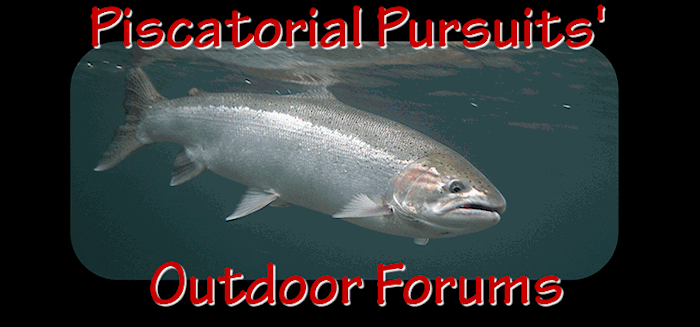RichG,
I doubt you realize it, but you do have a point as regards salmon. By WA state law, salmon are food fish, and the WDFW has organized itself around commercial fisheries intended to make salmon as food available to the people at large. Hence the nickname of the "Washington Department of Salmon." Overharvest began before the state had the mechanism to regulate salmon harvest. Then came poorly developed escapement goals to attempt to reign in overharvest. Then in 1984 the state and Boldt treaty tribes set in stone the management principle of Maximum Sustained Harvest (MSH), a slight variant of maximum sustained yield, a concept embraced by fishery managers nearly world wide. With one significant failing, because MSY and MSH are not actually sustainable. In every case I am aware of, they inevitably lead to a declining fish population trend that ends with the population no longer being abundant enough to make commercial pursuit worthwhile. In a nutshell, that's salmon management for you.
Steelhead are another matter. To the state steelhead are gamefish, to be managed to provide recreational fishing. To the treaty tribes steelhead are food fish, same as salmon. And whether they knew what they were doing or not, the state agreed with the tribes in 1984 to also manage steelhead under MSH. Except the state hasn't exactly done that, and most tribes haven't either, with some exceptions. The result is that steelhead have spawning escapement goals, and although far from perfect, are ecologically based and have the prospect of sustaining steelhead populations indefinitely. The steelhead problem is one of a changing environment, both in freshwater and especially in the marine and ocean environments.
Between reduced steelhead harvests through wild steelhead release regulations in the recreational sector and extremely reduced harvest in the treaty fishing sector, harvest is nearly out of the equation affecting wild steelhead abundance as a practical matter. Well, then, if steelhead are not being over harvested, then why aren't there more of them? Excellent question Poindexter. It's the environment that provides critical space and forage that is limiting their abundance. Climate change, you know, the one that's a hoax, is changing stream hydrographs, causing both winter flooding and summer drought to be both more frequent and more severe than they were during the decades of peak steelhead abundance. And the ocean, where steelhead attain most of their growth is out of whack as well. We get changes in spring coastal upwelling that produces critical forage for juvenile salmon and steelhead, increases in surface sea temperature in the far western Pacific where most steelhead forage, increases in competition in the far western Pacific Ocean from hatchery pink and chum salmon released in Japan and Alaska, and increased avian and marine mammal predation as their former prey species also decline in abundance. The take home message: the aquatic environment that is critically necessary to abundant steelhead populations is a mess.
Oh, and the WA state population of humans has increased from 2.6 million, when wild steelhead were last doing quite well to 7.8 million today, when they aren't.
And that, RichG, is why you can't fish without regulation and harvest steelhead for subsistence whenever you feel like it. This is how the world has evolved, along with the not so helping hand of mankind. Life's a bitch, and then you die.













 Previous Topic
Previous Topic Index
Index


